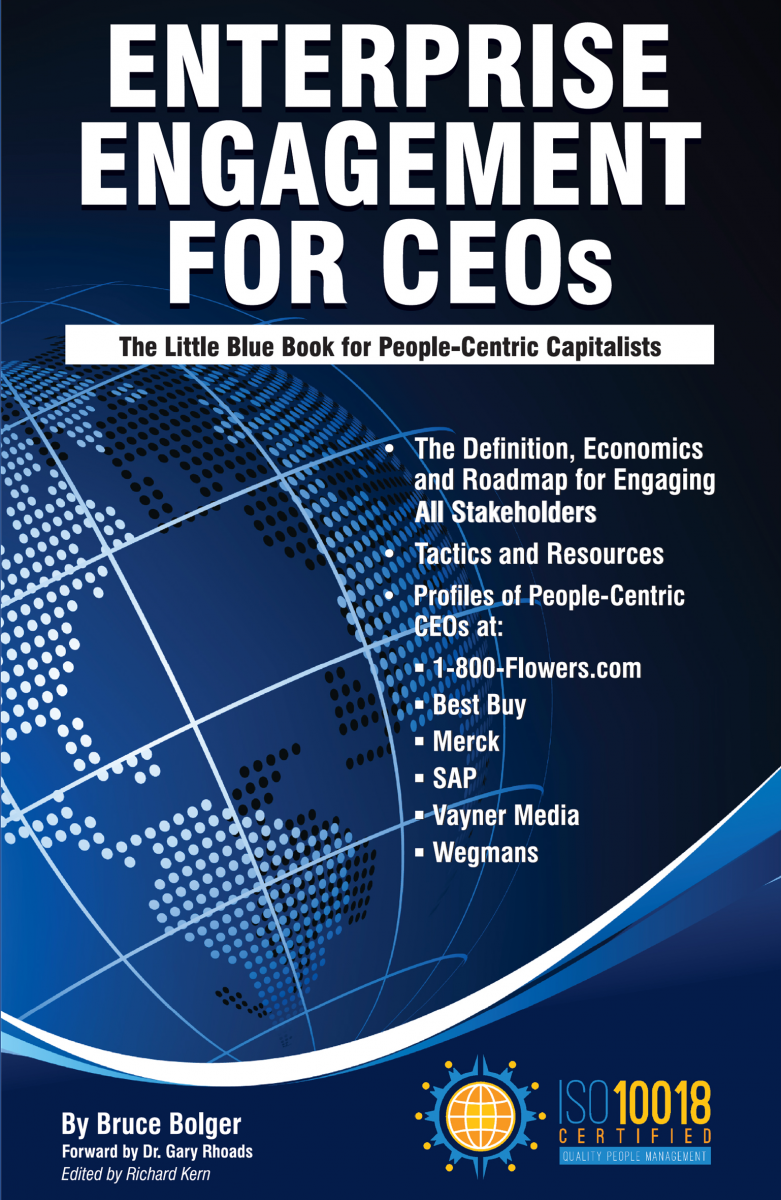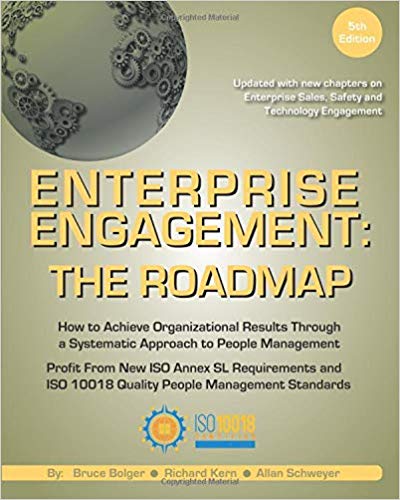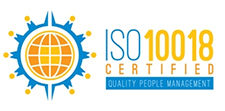While human resources social media communities remain largely silent on the coming human capital mandate, there are signs that the HR profession has begun to embrace the opportunities.
Followers of the most active human resources social media communities will notice that there is little talk of the coming human capital disclosures likely to be required by the Securities & Exchange Commission of public companies in the U.S. or the new ISO 30414 human capital internal and external reporting guidelines released earlier this year. The silence is surprising because:
• Leading investors are now demanding that public companies demonstrate a strategic and systematic approach to engaging all stakeholders through public disclosures, a role that would seem ideally suited to human resources.
• The European Union already has implemented regulations requiring companies with over 500 employees to disclose their human capital management practices.
• Over 70% of US consumers now make decisions related to buying or job choices based on an organization’s perceived commitment to people and want organizations to publish more information about their practices.
The question is: will human resources grasp the opportunity being created by these trends? Recent articles published in SHRM (Society of Human Resources Management) media and Workforce.com, as well as a new council of HR professionals, suggest the answer is yes.
SHRM Article Reports on Proposed SEC Human Capital Disclosures
In a recent article published in SHRM’s employment law column, “
SEC May Soon Require Human Capital Reporting,” author Allen Smith writes, “Public companies will have to submit reports on their human capital if the Securities & Exchange Commission (SEC) finalizes a rule it proposed Aug. 8. Human capital reporting may result in a hiring boon for HR professionals, legal experts say, as HR will play a pivotal role in reporting this information. Nonetheless, some worry that human capital reporting would put public companies at a competitive disadvantage to companies that aren't public.”
The writer notes that “Workforce composition metrics are likely to raise competition concerns for a public company because they can reveal details to competitors about the company's business strategy and deployment of human resources,” and also that information disclosed about use of artificial intelligence or other decisions affecting human capital could provide non-public competitors with an advantage.
"On the plus side, a decision to report such information will lead management to focus on these metrics and to work toward improvement as necessary," according to Sanjay Shirodkar and Deborah Meshulam, attorneys with DLA Piper in Washington, D.C. quoted in the article.
The author quotes observers saying that HR should play a key role in helping companies develop disclosure strategies. “Should the rule be finalized,” suggests Laura Richman an attorney with Mayer Brown in Chicago, “HR is well-suited to be sure that the tone of such disclosures reflect the company's goals and priorities in this area.’" But, she adds, "it is very important that the securities lawyers versed in the SEC's principles-based disclosure requirements and who understand how to assess materiality for securities law purposes be involved in any human capital disclosure because disclosure in SEC filings can give rise to securities law liabilities."
David Vance, in an article published recently in Workforce.com, “
Human Capital Disclosure May Soon Be Mandated by the SEC”, writes, “Earlier this year
I wrote about the first-ever ISO standards for human capital reporting, which were published in December 2018. These called for the voluntary public disclosure of measures for both large organizations and small/medium-sized organizations. While some European and Asian governments are likely to adopt the ISO recommendations as law, the US Congress was never likely to follow suit, so it appeared that adoption in the US would be voluntary and slow. The US Securities & Exchange Commission just published proposed rulemaking, which, if implemented, will bring human capital disclosure to US-publicly traded companies much sooner than anyone imagined. This is a game changer for our profession and a VERY BIG DEAL!” (Note: the emphasis is the author’s.)
Vance asks: “Did you just feel the earth shifting below your feet? You should have. The importance of this proposed rule for our profession simply cannot be overstated. Many in the profession have worked years to increase the visibility and use of human capital measures. The time finally may have come for it in the US.”
According to Vance, “Most companies will rely on their heads of HR as well as accounting for guidance on what to include in their narrative on human capital, if for no other reason than risk mitigation. These leaders in turn will look to the human capital profession for guidance. And they will find ISO
30414:2018, the human capital reporting standards published in December 2018. These standards recommend the external reporting of 23 measures for large companies and 10 for small/medium. These measures will be a natural starting point as companies decide what to discuss, so if you don’t yet have a copy, get one, and be prepared to proactively help your organization be a leader in human capital reporting.”
New HR Council Includes Investors, Technology Leaders
Adding to the evidence that HR has begun to grasp the opportunity of the coming human capital mandate, a new group, the Human Capital Investment and Reporting Council (HC IRC) recently
held its first event in New York “to explore human capital investment, talent risk, business impact measurement, and reporting best practices. The Council, representing more than two dozen participating organizations, reportedly brought together institutional investors, HR executives, technology experts, and other thought leaders in a confidential member forum.”
According to the Linked in post, the key takeaways from the event include:
• Attendees value the perspective of “key stakeholders, from finance, the investor, regulatory, and technology communities.”
•
Pressure is growing to report and disclose how human (and social) capital contribute to business value. The group discussed SEC Chair Jay Clayton’s recent
remarks about human capital and the benefits of the new ISO 30414 Human Capital Internal and External Reporting guidelines, as well as growing interest in human capital measurement in the accounting profession.
• Whatever standards or metrics are used, human capital reporting needs to be connected to financial and other performance data.
• Technology can help drive transparency but needs to be part of a strategic plan.
• Most participants at the meeting do not feel ready yet to make human capital disclosures.
The organization plans to continue to explore “how organizations can move to standardization and business impact measurements of human capital.”
Master the Principles of Enterprise Engagement to Achieve Organizational Goals and Enhance Your Career
-
Profit from a new strategic and systematic approach to engagement to enhance your organization’s brand equity; increase sales, productivity, quality, innovation, and safety, and reduce risks.
-
Get trained to become a Chief Engagement Officer for your organization.
-
Achieve ISO 10018 Quality People Management Certification to demonstrate your organization’s strategic commitment to people to your customers, employees, distribution partners, vendors, communities, investors, and regulators.
-
Learn how to create Sustainability or Integrated Reports for Your Organization or Clients.
-
Get up-to-speed on ISO human resources standards and guidelines to enhance HR performance.
Live Education: Enterprise Engagement in Action. Take advantage of scheduled monthly live webinar preparation courses for the Certified Engagement Practitioner designation consisting of three one-hour classes and of quarterly Advanced Engagement Practitioner courses consisting of three one-hour webinar classes. The AEP course is for individuals or teams seeking preparation ISO 10018 professional certification status. ICEE periodically runs regional one-day workshops on ISO 10018 Quality People Management principles and certification.
Resources: The Brand Media Coalition, the only guide to the story-telling power of brands and where to source them for business, event, promotional gifting, and rewards and recognition. 2019 Enterprise Engagement Solution Provider Directory. The only directory of engagement solution providers covering all types of agencies and tactics as well as insights on how to select them.
Communities: The Enterprise Engagement Alliance and Advocate and the Brand Media Coalition free resource centers offering access to the latest research, news, and case studies; discounts, promotions, referrals, and commissions, when appropriate to third-party solution providers from participating coalition solution provider members.

In Print:
Written specifically to provide CEOs and their leadership teams a concise overview of the framework, economics, and implementation process of a CEO-led strategic and systematic approach to achieving success through people. (123 pages, $15.99)
Enterprise Engagement: The Roadmap 5th Edition
The first and most comprehensive book on Enterprise Engagement and the new ISO 9001 and ISO 10018 quality people management standards. Includes 36 chapters detailing how to better integrate and align engagement efforts across the enterprise. (312 pages, $36.)
 Online:
Online:
• 10-minute short course: click here for a 10-minute introduction to Enterprise
• Engagement and ISO standards on Coggno.com.
• 5-minute Audiopedia summary of the Enterprise Engagement field.
Services:
• The International Center for Enterprise Engagement at TheICEE.org, offering: ISO 10018 certification for employers, solution providers, and Enterprise Engagement technology platforms; Human Resources and Human Capital audits for organizations seeking to benchmark their practices and related Advisory services for the hospitality field.
• The Engagement Agency at EngagementAgency.net, offering: complete support services for employers, solution providers, and technology firms seeking to profit from formal engagement practices for themselves or their clients, including Brand and Capability audits for solution providers to make sure their products and services are up to date.
• C-Suite Advisory Service—Education of boards, investors, and C-suite executives on the economics, framework, and implementation processes of Enterprise Engagement.
• Speakers Bureau—Select the right speaker on any aspect of engagement for your next event.
• Mergers and Acquisitions. The Engagement Agency’s Mergers and Acquisition group is aware of multiple companies seeking to purchase firms in the engagement field. Contact Michael Mazer in confidence if your company is potentially for sale at 303-320-3777.
Enterprise Engagement Benchmark Tools: The Enterprise Engagement Alliance offers three tools to help organizations profit from Engagement. Click here to access the tools.
• ROI of Engagement Calculator. Use this tool to determine the potential return-on-investment of an engagement strategy.
• EE Benchmark Indicator. Confidentially benchmark your organization’s Enterprise Engagement practices against organizations and best practices.
• Compare Your Company’s Level of Engagement. Quickly compare your organization’s level of engagement to those of others based on the same criteria as the EEA’s Engaged Company Stock Index.
• Gauge Your Personal Level of Engagement. This survey, donated by Horsepower, enables individuals to gauge their own personal levels of engagement.
For more information, contact Bruce Bolger at Bolger@TheEEA.org, 914-591-7600, ext. 230.
[return to top]
 Online:
Online: 














